Explore effective methods to initiate a successful digital marketing campaign, featuring beginner-friendly steps and real-world examples.
Executing a digital marketing campaign doesn’t have to be daunting. With a structured, step-by-step approach, you can significantly enhance your chances of success. This guide will equip you with the essential strategies to craft a digital marketing campaign that delivers optimal results.
What Is a Digital Marketing Campaign?
A digital marketing campaign is a coordinated strategy designed to promote a business’s products or services to a targeted online audience by leveraging multiple digital channels and platforms.
Its main objectives can vary—from boosting brand visibility and attracting more website visitors to increasing sales, improving customer interaction, and fostering lasting brand loyalty.
Planning such a campaign helps define your target audience, clarify your goals, and determine the best methods—such as SEO, pay-per-click advertising, social media, or content marketing—to reach those objectives effectively.
How To Run a Digital Marketing Campaign
These 10 steps will guide you through setting up an effective digital marketing campaign.
1. Set Your Marketing Goals
Before anything else, it’s important to understand the “why” behind your digital marketing campaign by identifying the reason or objective for launching it.
The options are virtually limitless, but attempting to pursue too many objectives simultaneously can dilute your focus and hinder success. For example, are you looking to enhance conversion rates, expand your email database, drive more organic traffic, improve keyword rankings, or increase social media engagement?
Marketing goals generally fall into categories like brand awareness, revenue growth, lead generation, and audience expansion. Some goals, such as tracking lead acquisition, are more quantifiable than others.
For instance, it’s easier to measure the growth of your email subscriber list than to gauge an increase in brand recognition. However, it’s crucial to back up these objectives with data-driven insights wherever possible.

Here are some examples of achievable goals:
- Boost brand awareness by securing 5 mentions from major media outlets/websites
- Increase organic search traffic by 5,000 monthly visitors within 45 days
- Grow social media followers to 10k by year-end
- Drive a 50% increase in sales by implementing an abandoned cart email sequence on the eCommerce store
- Add 500 qualified email subscribers within 30 days
Each goal you set should come with a clear action plan. For example, if your goal is to increase organic traffic, your plan will include tasks like analyzing your current content, conducting keyword research, refreshing outdated posts, creating new content, and engaging in backlink outreach and social media promotion.
You can run as many digital marketing campaigns as you like, but it’s important to establish specific, measurable outcomes for each. This approach enables you to analyze your data, identify what’s working, and optimize your digital marketing strategy going forward.
2. Identify Your Target Audience
Do you understand your target audience? Before launching a marketing campaign, it’s essential to clearly define the specific audience you aim to reach.
If you haven’t pinpointed this audience yet, take the time to research and carefully consider who they are.
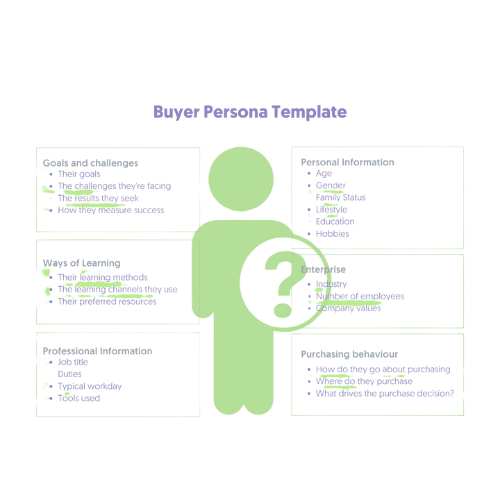
One effective approach is to create a buyer or customer persona, which is a detailed description of your ideal customer. This persona should include details such as:
- Their occupation
- Their income level
- Their family situation
- Their age
- Their hobbies
In addition, when developing an ideal customer persona, consider including the following:
- The types of websites they visit
- Their goals when visiting your site
- Their fears or desires
If this is your first time creating a persona, you can gather insights from existing data about your target market.
A great resource for this is Google Analytics. If your website is generating traffic, you can analyze your data to extract valuable information such as:
- Age
- Gender
- Geographic location
- How they navigate your site
- The types of content they engage with the most
Compile all this information into a document or user profile, and consider adding images to help anyone working on the campaign visualize your target audience.
If your market consists of multiple audience segments, repeat this process for each segment and create a distinct customer avatar for each one.
3. Perform Keyword And Topic Research
At this point, you should have a solid understanding of your campaign objectives and a clear picture of your target audience. The next step is to identify relevant topics and keywords that resonate with your audience.
Regardless of whether you’re running an SEO, PPC, email, Facebook, or any other type of campaign, conducting keyword research will guide your efforts effectively.
The purpose of keyword research is to put yourself in the shoes of your customers, considering the search terms they would use on platforms like Google (or others) when looking for your products and services.
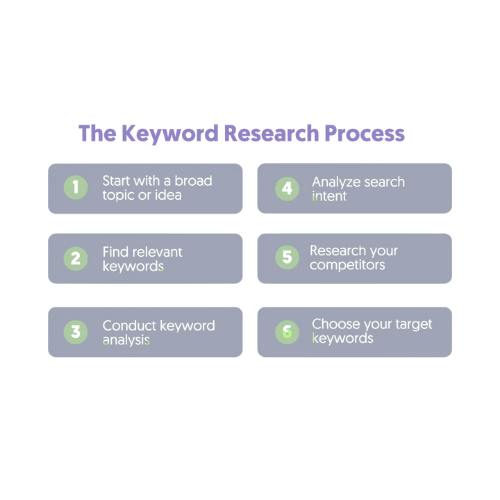
Take time to brainstorm keywords that align with your target audience’s search intent, then use keyword tools to identify phrases with good search volume and low competition.
In addition to Google search, here are other ways to generate keyword ideas:
- Explore Reddit to find discussions and topics relevant to your niche.
- Use tools like Answer the Public to discover question-based keywords.
- Utilize Google Keyword Planner to uncover related keywords.
Once you’ve compiled your initial list, input these seed keywords into a tool like Semrush for a more in-depth keyword analysis.
The goal is to create a list of SEO and PPC keywords to drive your campaigns forward.
4. Run A Competitor Analysis
The next step is to analyze your competitors’ activities. This will help you understand their strategies and pinpoint their strengths and weaknesses.
Here are a few key questions to consider when researching your competitors:
- What products or services are they promoting?
- Which marketing channels are they utilizing?
- What is their content strategy?
- What kind of ads are they running, and what message are they conveying?
- What is their pricing approach?
- What feedback are customers giving about their products and services?
Competitor analysis offers valuable insights. Your objective is to identify successful tactics they’re using, replicate them where possible, and find unique ways to set your campaigns apart and improve them.
Tools like the Facebook Ads Library and Google Ads Library can help you examine their paid ad campaigns, while other methods can assist in uncovering competitor keywords.
5. Choose Your Digital Channels
The next step is to determine which channels to incorporate into your campaigns. Typically, digital marketing campaigns involve multiple channels, but when you’re just getting started, it’s best to focus on one or two channels that align with your primary objective.
There are various digital marketing channels to consider, with the most popular being SEO, PPC, social media marketing, email marketing, affiliate marketing, and influencer marketing.
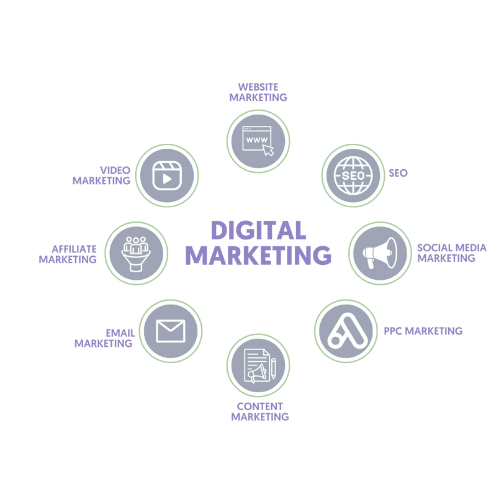
For instance, if your primary goal is to boost brand awareness, social media and influencer marketing can be highly effective. Social media platforms enable you to connect with a broad audience and interact with them directly, while influencers can extend your reach by sharing your message with their followers.
Alternatively, if your goal is to drive more traffic to your website, focusing on SEO and PPC would be more advantageous. SEO helps improve your website’s search engine ranking, making it more visible, while PPC delivers immediate traffic through targeted ads.
As you can see, there are various overlapping channels that can help you meet your goals. The key is to choose the channels that best align with your objectives and audience, ensuring your efforts are streamlined and effective.
You can always review and integrate additional channels as your campaign evolves to expand your reach and impact.
6. Set Campaign Budget
For any digital marketing campaign, it’s essential to establish a budget. This budget should account for both internal company expenses and costs for any external agencies or contractors involved in creating creative assets or managing the campaigns.
Knowing the projected cost of your campaign upfront will guide your strategy and action plan. When setting your budget, consider these tips:
- Allocate a budget for each channel based on your goals. For instance, if brand awareness is your goal, you’ll need to allocate funds specifically for social media marketing, such as Facebook Ads.
- Set aside a portion of your budget for campaign testing. Before launching your campaign, it’s crucial to run tests to ensure everything is set up correctly. Budget for A/B testing and ongoing campaign optimization.
- Don’t forget software costs: In addition to paying for ads and creative materials, you’ll also need to invest in paid tools to assist with campaign setup and management.
7. Create Your Content Strategy
No matter what type of campaign you’re running, developing a content strategy is essential. Your content strategy should outline the types of content you’ll use in your campaigns, identify who will create the content, and detail how each piece of content will be utilized.
The type of content you need to create will vary depending on the specific campaign you’re executing.
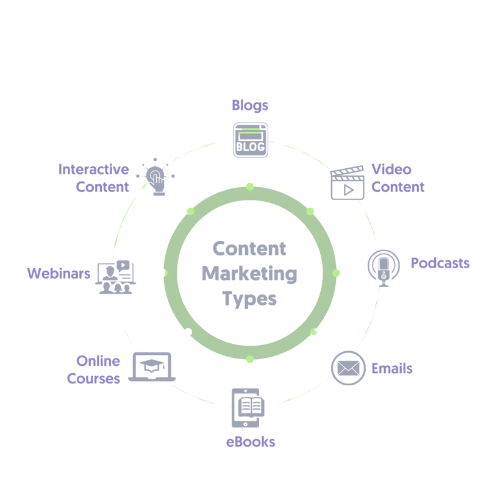
Here are a few examples:
- If your goal is to increase organic search traffic, you’ll need to produce a series of blog posts.
- For Facebook or Instagram ads, you’ll need to develop all of your ad creatives and the landing pages where you’ll direct traffic.
- If you’re running a video marketing campaign, you’ll need to create, edit, and publish a series of videos.
Remember, your content assets will evolve based on performance. You may discover that certain types of images outperform others, or that a particular headline boosts sign-ups by 10%. While your audience targeting will remain consistent (focusing on your ideal customer), your ad creative will adapt based on what resonates most with your market.
Refining and creating new content is a continuous task in any digital marketing campaign.
8. Create A Project Plan With Milestones
A digital marketing campaign is essentially a project, whether small or large, with tasks, milestones, and deliverables. To manage it effectively, you need to create a comprehensive plan that outlines the tasks to complete before launching the campaign, as well as the actions required to monitor and optimize its performance.
Your action plan should specify who is responsible for each task and establish milestones to track progress.
For example, if your campaign aims to boost sales of your digital products, your project plan might include initial tasks like market and audience research, with milestones for completing PPC keyword research and creating ad creatives.
Once the campaign is live, you can set biweekly milestones to assess performance and make necessary adjustments.
Having a project plan ensures all team members are clear on their responsibilities, and progress is tracked toward specific objectives.
9. Start Your Campaign
The next step is to launch your campaign!
Here’s a pro tip: Don’t start your paid campaigns with the full budget right away—run some tests first. For example, if your daily budget for Facebook Ads is $100, begin with a lower amount, like $50 per day, and gradually increase it.
This approach helps ensure that:
- You don’t waste your budget if something is set up incorrectly.
- The algorithms have enough time to gather data and optimize the campaign delivery.
For content marketing campaigns, getting immediate feedback can be more difficult. However, you can track how your audience engages with your content through comments, social shares, sign-ups, and time spent on the page.
Once you identify which campaigns are yielding the best results, it’s time to focus more resources on them. Analyze the ROI from each campaign and allocate your budget to the top performers.
10. Monitor And Optimize Performance
Digital marketing campaigns provide an abundance of data. Every advertising platform offers a dashboard to monitor performance, and you can also use various third-party tools for more in-depth analysis.
However, before diving into the data, it’s important to revisit your goals. This will help you focus on the key performance indicators (KPIs) that truly matter. After analyzing these metrics, you’ll be able to identify what’s working and what isn’t, providing valuable insights for actionable improvements.
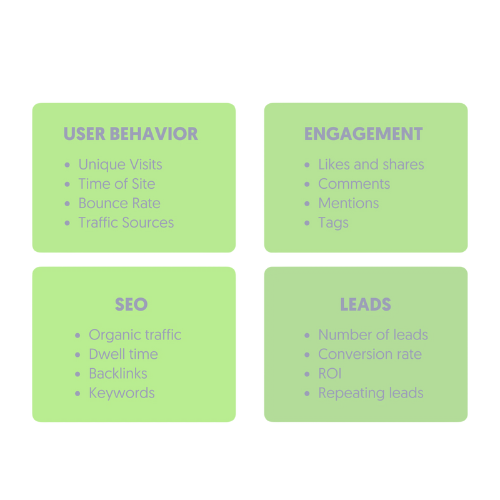
For example, if your goal is to increase search engine traffic, focus on tracking metrics like rankings, click-through rates, and visits from Google. If your goal is to generate more leads, monitor form submissions and conversion rates.
As you dig deeper into your data, identify which aspects of your campaign are performing well and which are underperforming. For instance, if you see a high click-through rate but low conversions, it could suggest that your landing page isn’t optimized effectively.
It’s normal for some digital marketing campaigns to not deliver positive results for various reasons. When this happens, analyze why the campaign didn’t succeed and use that insight to design a new round of targeted A/B tests for improved performance.
Here’s another pro tip: One of the most effective ways to boost ROI from any digital marketing campaign is to run retargeting ads alongside your primary campaigns.
Retargeting ads allow you to re-engage people who interacted with your campaigns but didn’t take the desired action. Common platforms for retargeting include Facebook Ads, Google Ads, and email marketing.
Key Learnings
As you can see, executing a successful digital marketing campaign involves multiple steps.
It starts with selecting clear and achievable campaign goals. Then, you enter the research phase, where you analyze your market, competition, and identify the keywords to target in your campaigns. After that, you’ll choose the digital channels to use and set your budgets.
The final steps include creating the necessary content assets, developing a project plan, and launching your campaigns.

 Step-by-Step Guide to Building a Digital Marketing Campaign
Step-by-Step Guide to Building a Digital Marketing Campaign
0 Comment